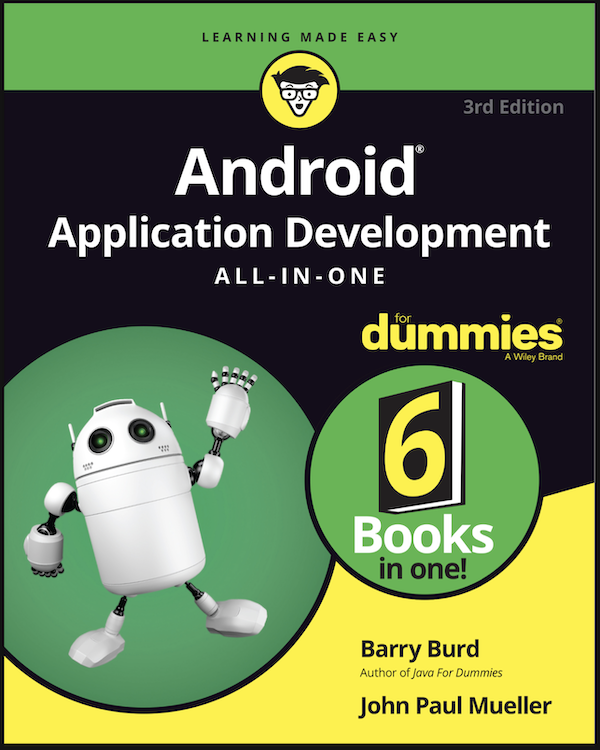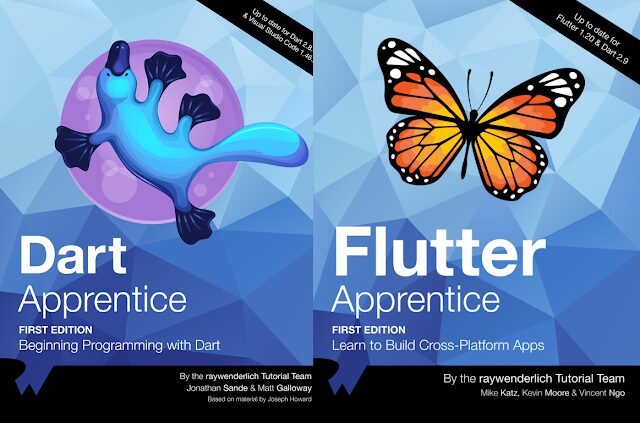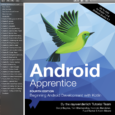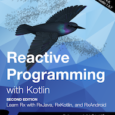
Download Android Application Development All Dummies PDF
Download Android Application Development All Dummies EPUB
Android Application Development All Dummies Book Details
Title: Android Application Development All Dummies
Author: Barry Burd and John Paul Mueller
Language: English
No. of pages: 803
Format: PDF, EPUB
Android Application Development All-in-One For Dummies
Introduction
As the year 2019 drew to a close, Android ran on 51.8 percent of all smart- phones in the United States and on 85 percent of all smartphones world
Today, Android is everywhere, and experts predict that Android will dominate the global smartphone market for years to come.4 So, if you read this book in a public place (on a commuter train, at the beach, on the dance floor at the Coyote Ugly saloon), you can read proudly, with a chip on your shoulder and with your chest held high. Android is hot stuff, and you’re cool because you’re reading about it.
How to Use This Android Application Development All Dummies Book
You can attack this book in either of two ways. You can go cover to cover, or you can poke around from one chapter to another. You can even do both (start at the beginning and then jump to a section that particularly interests you). In this book, the basic topics come first, and the more involved topics follow the basics. You may already be comfortable with some basics, or you may have specific goals that don’t require you to know about certain topics.
The best advice is as follows:
» If you already know something, don’t bother reading about it.
» If you’re curious, don’t be afraid to skip ahead. You can always sneak a peek at
an earlier chapter if you really need to do so.
1 See www.statista.com/statistics/266572/market-share-held-by-smartphone- platforms-in-the-united-states/.
2 See https://hostingtribunal.com/blog/operating-systems-market-share/#gref.
3 See statista.com/statistics/276623/number-of-apps-available-in-leading-app-stores/. 4 See www.idc.com/promo/smartphone-market-share/os.
Conventions Used in This Book
Almost every technical book starts with a little typeface legend, and this book is no exception. What follows is a brief explanation of the typefaces used in this book:
- » New terms are set in italics.
- » If you need to type something that’s mixed in with the regular text, the characters you type appear in bold. For example: “Type MyNewProject in the text field.”
- » You see this computerese font for Kotlin code, filenames, web page addresses (URLs), onscreen messages, and other such things. Also, if some- thing you need to type is really long, it appears in computerese font on its own line (or lines).
- » You need to change certain things when you type them on your own com- puter keyboard. For instance, the instructions may ask you to type public void Anyname which means that you type public void and then some name that you make up on your own. Words that you need to replace with your own words are set initalicized computerese. Foolish Assumptions This book makes a few assumptions about you, the reader. If one of these assump- tions is incorrect, you’re probably okay. If all these assumptions are incor- rect . . . well, buy the book anyway. The assumptions are as follows:
- » You can navigate through your computer’s common menus and dialog boxes. You don’t have to be a Windows, Macintosh, or Linux power user, but you should be able to start a program, find a file, put a file into a certain folder . . . that sort of thing. Much of the time, when you practice the stuff in this book, you’re typing code on your keyboard, not pointing and clicking your mouse.
- » You can think logically. That’s all there is to application development — thinking logically. If you can think logically, you have it made. If you don’t believe that you can think logically, read on. You may be pleasantly surprised.
Android Application Development All-in-One For Dummies
» You have some programming experience (maybe not a lot). This Android Application Development All Dummies book should be interesting for experienced programmers, yet accessible to people who don’t write code for a living. If you’re a programming guru, that’s great. If you’re a certified Linux geek, that’s great, too. But no one expects you to be able to recite the names of Kotlin’s concurrency primitives in your sleep,
or pipe together a chain of 14 Linux commands without reading the documentation.
By the way, if you have no experience with an object-oriented language, you can get some. Your favorite bookstore has a terrific book titled Java For Dummies, 7th Edition, by Barry Burd (John Wiley & Sons, Inc.). The book comes highly recommended.
Icons Used in This Android Application Development All Dummies Book
Throughout this book, an icon in the margin marks the beginning of a little detour — a fact or tidbit that stands out for one reason or another. The paragraphs marked by icons differ in their degree of importance. Some are valuable reading, others are silly trivia, and many are somewhere in the middle.
What kinds of icons do you find in this book? Here’s a list:
A Tip is an extra piece of information — something helpful that the other books may forget to tell you.
A Warning icon describes a mistake that many people make. Don’t interpret the icon to mean, “Never make this mistake.” That would be unreasonable. Instead, think of the icon as a word of comfort. It says, “Like everyone else, you’ll prob- ably make this mistake. When you do, remember that you once read about it here. Return to this section if you feel so inclined.”
Question: What’s stronger than a Tip, but not as strong as a Warning?
Answer: A Remember icon.
Each Technical Stuff icon introduces an interesting fact. Some of these facts help you understand the reasoning behind the design of Android. You don’t have to read all the Technical Stuff icons, but you may find them useful. They’re especially helpful if you plan to read other (geekier) books about Android app development.
Beyond the Book
You’ve read the Android All-in-One Android Application Development All Dummies book, seen the Android All-in-One movie, worn the Android All-in-One T-shirt, and eaten the Android All-in-One candy. What more is there to do?
That’s easy. Just visit this book’s website — www.allmycode.com/Android. At the website, you can find updates, comments, additional information, and lots of downloadable code. (You can also get there by visiting www.dummies.com and searching for Android Application Development All-in-One For Dummies, 3rd Edition.
Also on this book’s page at www.dummies.com is the Cheat Sheet, which provides you with hints you need for nearly every Android app, such as parts of an Android app and the contents of that all important .apk file. You also get quick reminders about navigation classes, parts of a notification, and user interface elements.
Where to Go from Here
If you’ve gotten this far, you’re ready to start reading about Android application development. Think of us (this book’s authors) as your guides, your hosts, your personal assistants. We do everything we can to keep things interesting and, most important, help you understand.
If you experience any problems at all with this book, please contact either or both of us: Barry (android@allmycode.com) or John (John@JohnMuellerBooks.com) for assistance. We want you to be truly happy with your purchase and will help in any way we can with book-specific questions. You can also contact Barry on Twitter (@allmycode) and Facebook (www.facebook.com/allmycode).
Occasionally, we have updates to our technology books. If this book does have technical updates, they will be posted at this book’s page at www.dummies.com and at http://allmycode.com/android.



